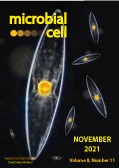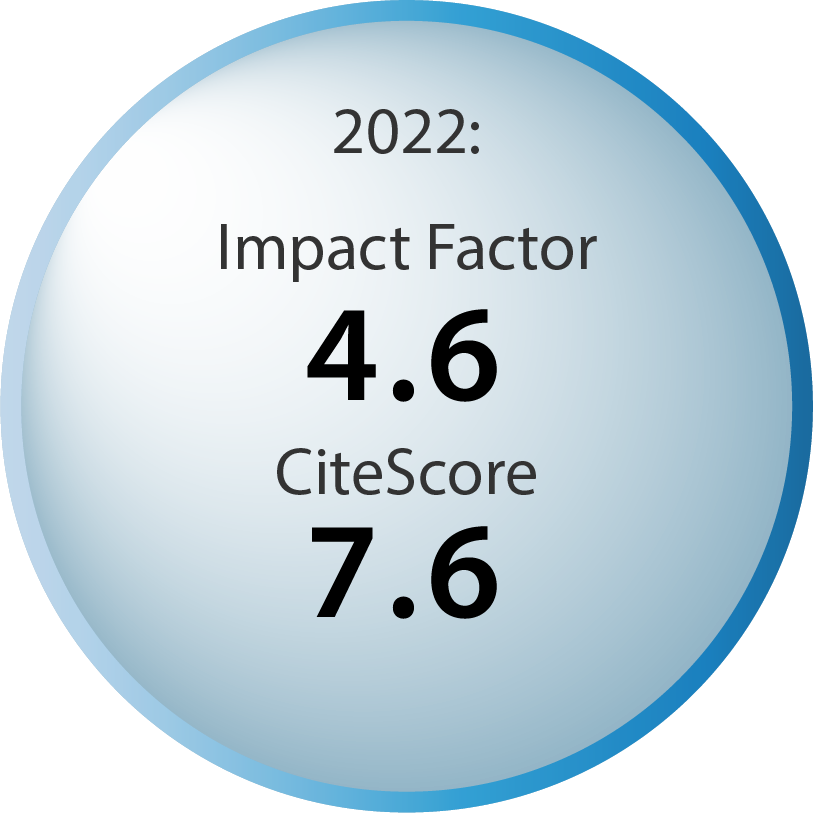Table of contents
Volume 8, Issue 11, pp. 256 - 275, November 2021
Cover: Photo of the marine dinoflagellate "Pyrocystis fusiformis", also known as "glowing algae" made in a dark field microscope and displaying the nucleus in the center (image by Aleksandra Szczerbiak retrieved via Wikipedia; image modified by MIC). The cover is published under the Creative Commons Attribution (CC BY) license; https://creativecommons.org/licenses/by/4.0/deed.en.
Enlarge issue cover
Urm1, not quite a ubiquitin-like modifier?
Lars Kaduhr, Cindy Brachmann, Keerthiraju Ethiraju Ravichandran, James D. West, Sebastian Glatt and Raffael Schaffrath
News and thoughts |
page 256-261 | 10.15698/mic2021.11.763 | Full text | PDF |
Abstract
Ubiquitin related modifier 1 (Urm1) is a unique eukaryotic member of the ubiquitin-fold (UbF) protein family and conserved from yeast to humans. Urm1 is dual-functional, acting both as a sulfur carrier for thiolation of tRNA anticodons and as a protein modifier in a lysine-directed Ub-like conjugation also known as urmylation. Although Urm1 conjugation coincides with oxidative stress and targets proteins like 2-Cys peroxiredoxins from yeast (Ahp1) and fly (Prx5), it was unclear how urmylation proceeds molecularly and whether it is affected by the activity of these antioxidant enzymes. An in-depth study of Ahp1 urmylation in yeast from our laboratory (Brachmann et al., 2020) uncovered that promiscuous lysine target sites and specific redox requirements determine the Urm1 acceptor activity of the peroxiredoxin. The results clearly show that the dimer interface and the 2-Cys based redox-active centers of Ahp1 are affecting the Urm1 conjugation reaction. Together with in vivo assays demonstrating that high organic peroxide concentrations can prevent Ahp1 from being urmylated, Brachmann et al. provide insights into a potential link between Urm1 utilization and oxidant defense of cells. Here, we highlight these major findings and discuss wider implications with regards to an emerging link between Urm1 conjugation and redox biology. Moreover, from these studies we propose to redefine our perspective on Urm1 and the molecular nature of urmylation, a post-translational conjugation that may not be that ubiquitin-like after all.
Lipid and fatty acid metabolism in trypanosomatids
Giovana Parreira de Aquino, Marco Antonio Mendes Gomes, Roberto Köpke Salinas and Maria Fernanda Laranjeira-Silva
Reviews |
page 262-275 | 10.15698/mic2021.11.764 | Full text | PDF |
Abstract
Trypanosomiases and leishmaniases are neglected tropical diseases that have been spreading to previously non-affected areas in recent years. Identification of new chemotherapeutics is needed as there are no vaccines and the currently available treatment options are highly toxic and often ineffective. The causative agents for these diseases are the protozoan parasites of the Trypanosomatidae family, and they alternate between invertebrate and vertebrate hosts during their life cycles. Hence, these parasites must be able to adapt to different environments and compete with their hosts for several essential compounds, such as amino acids, vitamins, ions, carbohydrates, and lipids. Among these nutrients, lipids and fatty acids (FAs) are essential for parasite survival. Trypanosomatids require massive amounts of FAs, and they can either synthesize FAs de novo or scavenge them from the host. Moreover, FAs are the major energy source during specific life cycle stages of T. brucei, T. cruzi, and Leishmania. Therefore, considering the distinctive features of FAs metabolism in trypanosomatids, these pathways could be exploited for the development of novel antiparasitic drugs. In this review, we highlight specific aspects of lipid and FA metabolism in the protozoan parasites T. brucei, T. cruzi, and Leishmania spp., as well as the pathways that have been explored for the development of new chemotherapies.










